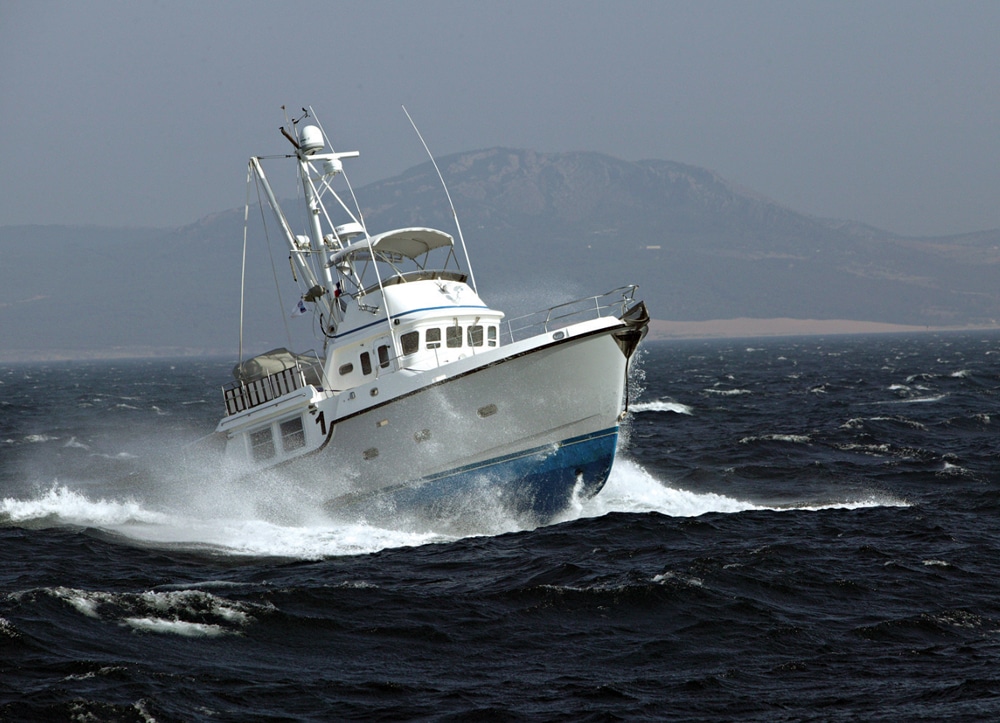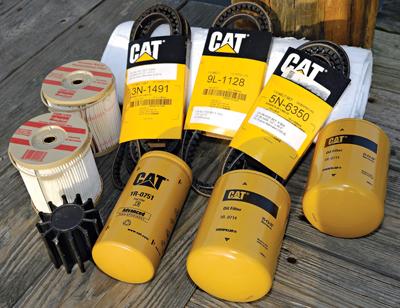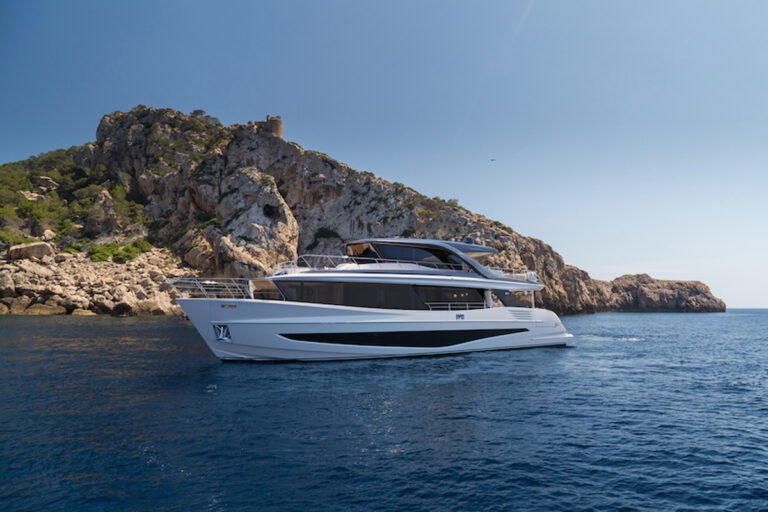
First Time in the Ocean?
Life raft? Check. Ditch bag? Check. Handheld VHF? Check. PFDs? Check. MOB ring? Check. Spare fuel filters? Check. Fuel tanks topped off ? Check. Back-up GPS? Check. Engine fluids? Check. Inspection of thru-hulls? Check. Spare impeller? Check. Waypoints entered? Check. Paper charts? Check. Okay. Weather forecast? Check. Time to go.
I clearly remember heading out of Cape May Inlet for the first time many years ago on our way up the Jersey coast for the 100-mile run to Sandy Hook. Even though I had crewed on a number of offshore passages on friend’s sailboats, this would be the first time my wife and I stuck the bow of our Grand Banks 42 out into the Atlantic.
It was a calm, hazy morning, and as we reached the halfway point in the inlet we began to feel our 35,000-pound vessel climb the incoming ocean surge, gently rising to the top before pivoting and pointing toward the bottom of the troughs. My mouth became dry. The planning was over. It was time to test our boat and our skills in the ocean.
As we learned, running offshore for the first time on your own boat can be intimidating. Even if you plan to hug the coast and enter a major port before sundown, a successful ocean passage requires preparation of your vessel and crew and a favorable weather forecast.
One of the biggest challenges is transiting inlets to reach the ocean or to return to protected waters. Even wide, deep inlets get tricky when the tide and wind oppose each other, setting up large, steep waves that can be dangerous. If possible, run an inlet just before ebb tide begins—the incoming swells won’t be fighting the outgoing flow, and the channel will be at its deepest. If you have to enter an inlet during unfavorable conditions, secure all hatches and don life jackets. Stay outside the inlet until you get a feel for what the seas are doing, and study your chart one more time. Above all, keep your eyes open and trust what they see. Shoals often move, and you’ll want to watch for the less turbulent water. When in doubt, wait outside and follow a local boat in, especially if it’s a commercial vessel.
Our years of cruising have taught us to be patient and wait for good weather. Trying to stick to a tight schedule can be dangerous. Check the forecast before heading offshore, and take advantage of today’s online marine weather sites such as buoyweather.com and windbuoy.com.
An offshore mechanical or electrical problem can be much more serious than if you’re within range of Sea Tow or TowBoat US, and losing power while running an inlet can be catastrophic, so you need to prepare your vessel before heading out.
I have a single diesel engine, so I am especially mindful of my fuel system. I start each trip by inspecting the bottom of my Racor filter housings for dirt or water. Fuel filter cartridges are cheap, so I always carry several spares. Having a second filter installed with a quick change-over valve brings peace of mind. As an extra precaution, I disassemble my Racor housings, give them a thorough cleaning, and install new cartridges before I head offshore.
Since few things can unsettle your nerves more than seeing your engine temperature rise when you’re miles from land, I replace my engine’s water pump impeller once a year, as a matter of habit, and always carry a spare. Checking the coolant level before departing is a must and having a few extra gallons onboard is advisable. Spare alternator belts should also be on your checklist. Checking all thru-hulls and making sure they are operable and have tight, double hose clamps also serves to remind you of where they are located. If you start taking on water, you’ll need to find the source immediately.

Trying to find the entrance to Edgartown on Martha’s Vineyard in a dense fog, after suffering a complete electrical failure, taught me the importance of having handheld electronics as backups years ago. Today I always carry a handheld VHF and GPS, and if I did more overnight passages, I’d add a portable night-vision device. If your planned route takes you beyond the normal range of VHF communications, I’d also recommend an EPIRB. Before our three-month cruise throughout the Exumas and Abacos, we added one to our emergency gear. While we never had to activate it, we didn’t feel quite as vulnerable on long, offshore passages.
Discovering a fire on board is a real heart stopper, so it’s important that your fire extinguishers and engineroom firefighting systems are all up to date. And if you’re going to be doing any cooking while offshore, be sure that your galley help is familiar with the operation of your stove and knows where the nearest fire extinguisher is located.
Another lesson my wife and I learned during our cruising is to have man overboard gear quickly accessible and to practice using it. We once listened helplessly to a frantic VHF call for help from a wife whose husband fell overboard between Block Island and Montauk Point. She had no idea of how to turn her sailing vessel around and go back to save her husband. We have a Lifesling system mounted in our cockpit, and when we’re offshore we keep a block-and-tackle rig hooked to our hardtop that would allow my wife to haul me in. Most important, my wife can handle our boat and operate its systems.
Of course, if you need to abandon ship, you’ll need a life raft to survive. Don’t think because you’re only a few miles offshore that you don’t need one. How long can you tread water in 10-foot depths? If your offshore trips are infrequent, you can rent a raft for a few hundred dollars. I recently helped a friend deliver his new 32-foot boat from Marblehead, Massachusetts to Annapolis, Maryland. I am sure he felt I was being overly cautious when I asked him to rent a raft. An hour into our trip, and 10 miles from land, we started taking on lots of water from a bad dripless shaft seal. Knowing that a raft was sitting in our cockpit greatly reduced our stress as we struggled to make emergency repairs. If you think your dinghy can double as your life raft, think again. Imagine sitting in it in just six-foot seas. Get the picture? Of course, if you own a raft, be sure to have it certified and repacked at the proper intervals.
If you have to jump ship, chances are things will be happening quickly. Be prepared with a ditch bag. Depending on the length of my planned route, I vary the contents. But it normally includes a handheld VHF, flashlight, flare kit, small signal mirror, air horn, first-aid kit, a supply of PowerBars, bottled water, and a thermal blanket. My raft has additional emergency supplies.
After that first run in the ocean we arrived safely in Sandy Hook, New Jersey, with a real sense of satisfaction and accomplishment. That uneventful passage was just the beginning of more than 20 years of memorable, adventurous cruising. On a few occasions we experienced an “event” that might have been life-threatening if we had not been prepared. But measured risks are part of the great attraction of cruising, and at this very moment we are preparing our boat for another series of voyages that will have us gladly pointing our bow to the open ocean.









